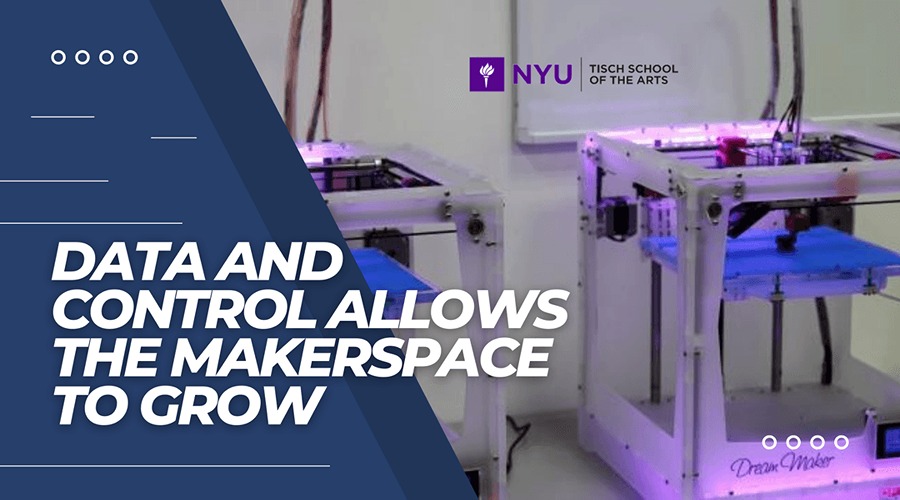
BROOKLYN, NY, May 16, 2025 – At NYU Tisch School of the Arts, the ITP/IMA Makerspace Lab has taken a practical approach to integrating technology with design and education. By adopting 3DPrinterOS, the lab has simplified how it manages its 3D printing operations. The platform provides a centralized system for handling print jobs, tracking usage, and maintaining access control. This setup improves efficiency and gives users visibility into printer usage, supporting appropriate scheduling and resource management.
Serving more than 600 students across NYU’s Interactive Telecommunications Program (ITP), Interactive Media Arts (IMA) undergraduate program, and a low-residency master’s program, the makerspace buzzes with experimentation – from virtual reality installations to open-source medical devices.
Previously, the lab had three unmanaged printers, leading to waste, limited access, and low efficiency. “It was chaos,” said Phil Caridi, shop manager and faculty advisor. “Students monopolized machines. Material use was unchecked. We had no way to monitor or manage it all.”
That changed with the adoption of 3DPrinterOS. “3DPrinterOS gave us structure without sacrificing creativity,” Caridi said. “It’s like gaining a staff member without hiring one.”
With 3DPrinterOS, the lab introduced a transparent, equitable system for 3D printer access. Students follow time limits, are restricted to one printer at a time, and are grouped by skill level to promote responsible printing. Real-time tracking of materials and projects helps optimize resources and support budgeting.
This transformation enabled the lab to expand its printer fleet from three to nine, plus one offsite unit for exhibitions and maker events. The new system also supports large-scale projects like:
- An open-source MRI unit, designed for use in remote or underserved areas, using basic CNC tools and 3D printers.
- Project Mjolnir, an adaptive mountain bike for differently-abled riders, designed with modular components and real-time sensor data to improve usability and comfort.
Beyond technology, these projects emphasize equity, sustainability, and real-world impact—core tenets of the makerspace’s mission. The lab is testing acrylic and PLA recycling to reduce waste and improve sustainability.
Caridi, a former bicycle mechanic turned educator and engineer, views the makerspace as a crucible for growth – not just in technical skill, but in empathy, design thinking, and collaboration. “Failure here isn’t a setback; it’s part of the process,” he said. “This space gives students the confidence to try, fail, and try again.”
With 3DPrinterOS, the ITP/IMA Lab is making design accessible, efficient, and sustainable.
Source: 3DPrinterOS
About 3DPrinterOS

3DPrinterOS, established in 2013 and based in San Francisco, CA, is a cloud-based platform developed by 3D Control Systems for managing 3D printing operations. It offers centralized control over printers, files, and user permissions, along with features such as cloud slicing, print queue management, and remote monitoring. The platform supports more than 150 printer models and integrates with design and firmware tools like TinkerCAD and Klipper. Designed for multi-user and multi-device environments, 3DPrinterOS is used to streamline 3D printing workflows across distributed teams. It is deployed in industries such as higher education, manufacturing, automotive, and consumer products, with clients including organizations like NASA, Google, Yale, and Bosch. As of May 2025, the company employs about 15 people and reports an estimated annual revenue of $3.8 million.
